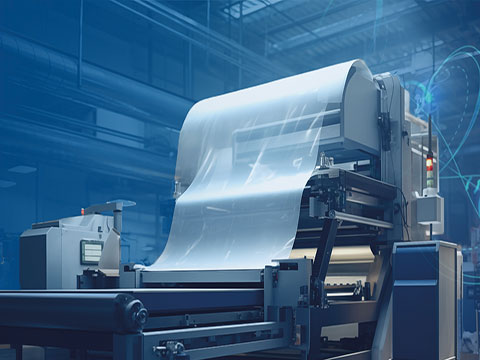
Posted to News on 30th Apr 2024, 17:30
How to unwind, wind and rewind with precision
When it comes to the precise processing of plastics, paper, textile and sheet metal it is necessary to unwind, wind or rewind continuous material webs with a defined tension to achieve perfect subsequent processing steps. That's why STOBER is focused on ensuring companies working in these industries, and others, get both quality and precision from every single roll.

STOBER understands that the choice of a suitable winding process depends largely on the mechanical conditions and the material that needs to be processed. However, the overall quality of the winding technology also determines the use of a particular winder type as this plays a key role in further processing.
A winder generally consists of a drive, a material web and - depending on the requirements for performance - a series of sensors. Furthermore, if the central shaft of the winder is driven, this is called a 'centre winder' application.
And here's why this is so important to consider. In order to prevent the material being handled from tearing or jamming the winder during the process, it is crucial that constant tension is achieved. In addition, the diameter of the roll is continually changing during winding or unwinding, becoming thicker or thinner. This is why diameter is a decisive factor in the design of the centre winder.
To keep the tension of the material web constant, either a sensor must detect the winding diameter, or the tension must be calculated using multiple system variables and the speed of the motor then controlled accordingly. The current velocity of the material web and the speed of the winder axis are decisive factors here.
STOBER has developed a solution that specifically address each of these factors to enable a smooth winding, unwinding and rewinding via tensile force control. This provides flexible, drive-based motion control of the single- and double-axis controllers using our SD6, SC6 and SI6 series to determine the position, velocity and torque/force control types.
Thanks to the STOBER centre winder, it's possible to implement indirect tension control, thus eliminating the need for additional, expensive measuring systems. The material tensile force is based on the process parameter configuration. The motor is operated with the set torque calculated from the material tensile force and winding diameter. The torque limit can then be adjusted accordingly and adapted as a function of the changing winding diameter or the fixed roller diameter of the tension control axis.
As well as delivering potential cost-savings across the process, this particular application will support process monitoring in real time.
Commenting, Martin Preece, Head of UK Subsidiary at STOBER, said: "Since the winder is driven by a central shaft, this application is more complicated. In terms of control technology, it is more complex to operate than other winder drives. For example, a centre winder requires friction and acceleration compensation to achieve good tension control.
"It is important to keep the mechanical loss of the system as low as possible. This means that a suitable motor and an efficient gear unit with low friction loss must be selected. The drive controller also must have excellent torque and current control.
"Our drive system offers the most suitable and efficient solution for all these requirements."
Want the latest machine building news straight to your inbox? Become a MachineBuilding member for free today >>
Centrix House
Upper Keys Business Village, Keys Park Road
Hednesford
WS12 2HA
UNITED KINGDOM
+44 (0)1543 458 858

















